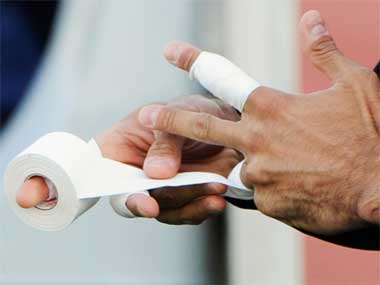Washington: You may soon be able to find out the state of your wound, thanks to “smart bandages” which change colour as it heals. An international team, led by Louise van der Werff of Monash University, has developed the smart bandages which it claims can change colour to reveal the actual state of the wound beneath. [caption id=“attachment_20860” align=“alignleft” width=“380” caption=“Smart bandages change colour to reveal the actual state of the wound beneath. Kevork Djansezian/Getty Images”]  [/caption] “We hope that the dressing could lead to more rapid and effective treatment of chronic wounds such as leg ulcers, saving time and money. We’ve created a fabric that changes colour in response to temperature — showing changes of less than 0.5 of a degree. “We expect that, when incorporated into a bandage it will allow nurses to quickly identify healing problems such as infection or interruptions to the blood supply, which are typically accompanied by a local increase or decrease in temperature,” said van der Werff. So far, the team has created the fabric. Within six months they’ll have turned it into a bandage, and then they’ll work with industry to trial the new bandages. Reduced blood supply due to systemic diseases such as diabetes, or inflammation as a result of infection, can lead to significant delays in healing. “If problems are not quickly identified and treated,” Louise said, “Wounds can persist for months or years resulting in a reduction in quality of life.” The colour-changing material the researchers have developed is in the form of a fibre, which may be woven or knitted into a loose textile product for incorporation into a wound dressing. It will allow both patients and clinicians to determine the temperature across the wound and surrounding tissue without using electronic equipment. They simply compare the colour of the fibres with a calibrated chart. This could lead to more timely, effective and relevant treatments by doctors and nurses and to limited self-diagnosis by patients allowing faster closure of wounds, says the team. “Having the ability to collect a broader range of data on a wound’s status will have a significant impact on the understanding of chronic wounds and how best to treat them,” said team member Robin Cranston. PTI
An international team, led by Louise van der Werff of Monash University, has developed the smart bandages which it claims can change colour to reveal the actual state of the wound beneath.
Advertisement
End of Article
Written by FP Archives
see more


)
)
)
)
)
)
)
)
)



